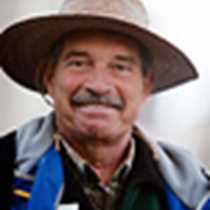Cabo San Lucas
Having traveled all night long along the southern part of the Pacific coast of the Peninsula of Baja California, we awoke to a sunrise with a beautiful green flash! As the sun rose, we began to see Cabo Falso or False Cape, with its old, abandoned lighthouse. High above, on the tallest hill at the seaside stands the new navigational aid. Sand dunes surround everything. Then came the constant stream of billfish sports boats out from the Bay of Cabo San Lucas, off to their great fishing grounds!
Shortly thereafter we were already at the world famous Friar Rocks and The Arch, at Land's End. The real end of the 1300 kilometer-long peninsula greeted us as we turned the corner and began our slow entrance to the harbor of Cabo San Lucas. We tarried though, as we stopped to observe a small group of California sea lions atop a more or less flat rock at almost water level. Others swam around, barking at those resting there.
Eventually we docked in the local marina, and after breakfast, set off by Zodiac to our first morning landing: Pelican Rock, an outcropping of the same granite as the rest of the rocks in this area. Here we snorkeled to our heart's content, encountering great numbers of fish, as well as sea urchins and sponges.After snorkeling we returned to our ship, the M.V. Sea Lion, to shower and dress for the hike that awaited us.
Cabo San Lucas is quite an old town, started by the Spaniards in 1566 to serve the returning Manila Galleons as a water and food replenishing station. They were often attacked by the English pirates Francis Drake, Thomas Cavendish, Woodes Rogers and Edward Cooke near this port. Nevertheless, today was an adventure for some of us, who went into town to shop for bargains in silver or local handicrafts.
The rest of us boarded a bus that dropped us off in a desert area with a series of paths on it, to bird and plant watch. Many of the plants were new to us, having seen only a few desert plants before, on Isla Magdalena. Many of the plants were in bloom, such as the Adam Trees, hummingbird flowers, blue and yellow morning glories and San Diego daisies. A special treat was the fairy duster, seen here. Birds seen were hummingbirds, mockingbirds, turkey vultures and flycatchers.
At 1300 we were all aboard and started our trip north, out along the Peninsula to Gorda Banks, where we had the marvelous opportunity of watching the behemoth humpback whales in their mating jaunts, males fighting males. What a way to spend a day!
Having traveled all night long along the southern part of the Pacific coast of the Peninsula of Baja California, we awoke to a sunrise with a beautiful green flash! As the sun rose, we began to see Cabo Falso or False Cape, with its old, abandoned lighthouse. High above, on the tallest hill at the seaside stands the new navigational aid. Sand dunes surround everything. Then came the constant stream of billfish sports boats out from the Bay of Cabo San Lucas, off to their great fishing grounds!
Shortly thereafter we were already at the world famous Friar Rocks and The Arch, at Land's End. The real end of the 1300 kilometer-long peninsula greeted us as we turned the corner and began our slow entrance to the harbor of Cabo San Lucas. We tarried though, as we stopped to observe a small group of California sea lions atop a more or less flat rock at almost water level. Others swam around, barking at those resting there.
Eventually we docked in the local marina, and after breakfast, set off by Zodiac to our first morning landing: Pelican Rock, an outcropping of the same granite as the rest of the rocks in this area. Here we snorkeled to our heart's content, encountering great numbers of fish, as well as sea urchins and sponges.After snorkeling we returned to our ship, the M.V. Sea Lion, to shower and dress for the hike that awaited us.
Cabo San Lucas is quite an old town, started by the Spaniards in 1566 to serve the returning Manila Galleons as a water and food replenishing station. They were often attacked by the English pirates Francis Drake, Thomas Cavendish, Woodes Rogers and Edward Cooke near this port. Nevertheless, today was an adventure for some of us, who went into town to shop for bargains in silver or local handicrafts.
The rest of us boarded a bus that dropped us off in a desert area with a series of paths on it, to bird and plant watch. Many of the plants were new to us, having seen only a few desert plants before, on Isla Magdalena. Many of the plants were in bloom, such as the Adam Trees, hummingbird flowers, blue and yellow morning glories and San Diego daisies. A special treat was the fairy duster, seen here. Birds seen were hummingbirds, mockingbirds, turkey vultures and flycatchers.
At 1300 we were all aboard and started our trip north, out along the Peninsula to Gorda Banks, where we had the marvelous opportunity of watching the behemoth humpback whales in their mating jaunts, males fighting males. What a way to spend a day!




